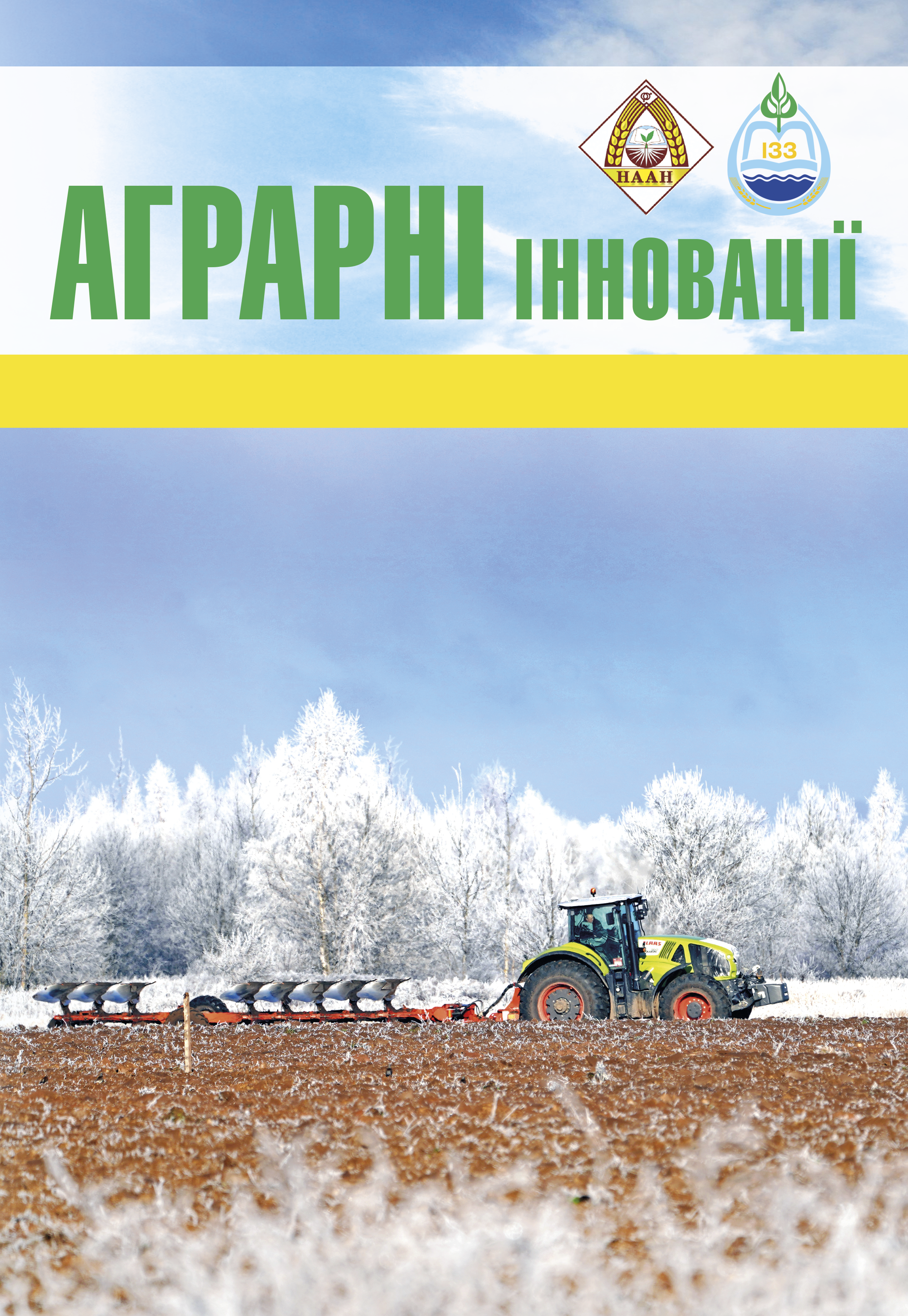Dependence of heat resistance of industrial hemp hybrids on genotype
Abstract
Purpose. Study of the effectiveness of gametophyte selection for heat resistance in industrial hemp to create breeding material with a high ability to pollination, fertilization, formation of viable fruits, normal growth and development of plants in conditions of elevated air temperature; development of a method of selection of varieties adapted to extreme environmental factors; establishing the role of genotype in the effectiveness of gametophyte selection for heat resistance. Methods. Breeding (crossbreeding at different temperature regimes for heating pollen and seeds), field (determination of field germination, degree of survival of plants until the end of the growing season, evaluation of valuable economic traits in the nursery), laboratory (analysis of germination energy and seed germination), general scientific methods, etc. Results. The effectiveness of the method of gametophytic selection of heat-resistant genotypes of seed hemp was confirmed, according to which the cultivation of mother plants and their pollination is carried out under fabric-film insulators in conditions of increased air temperature of 40–50°С (selection of female gametes), chemical sterilization of male flowers – by double treatment 2, 0% suspension of dibutyl phthalate in the BBCH 15 and BBCH 61 phase, pollination – with heated pollen at a temperature of 50–60°С and exposure for 30–60 min (selection of male gametes), selection of resistant genotypes at the level of the seed embryo to an elevated temperature – by heating the seeds at temperature of 50°С and exposure of 15–30 min, individual selection in hybrid generations – based on a complex of valuable economic traits. Conclusions. The analysis of the studied indicators of germination energy and seed germination in different hybrid plants of the same crossbreeding variant showed that heat resistance in industrial hemp is determined by the genotype, and the mode of heating pollen and seeds must be selected for each variant of hybridization separately.
References
2. Вожегова Р. А., Лавриненко Ю. О., Марченко Т. Ю., Міщенко С. В., Пілярська О. О., Базиленко Є. О. Перспективні культури для біоенергетики України. Аграрні інновації. 2022. № 11. С. 5–15. doi: 10.32848/agrar.innov.2022.11.1
3. Laiko I. M., Kobyzeva L. N., Mishchenko S. V., Kyrychenko H. I. Intra-population variability of oil content and fatty acid composition in modern hemp cultivars. Plant Breeding and Seed Production. 2022. Vol. 121. P. 20–27. doi: 10.30835/2413-7510.2022.260990
4. Міщенко С. В. Кліматично орієнтована селекція промислових конопель. Сlimate-Smart Agriculture: Science and Practice. Riga: Baltija Publishing, 2023. Р. 455–488. doi: 10.30525/978-9934-26-389-7-22
5. Shokat S., Großkinsky D. K., Singh S., Liu F. The role of genetic diversity and pre-breeding traits to improve drought and heat tolerance of bread wheat at the reproductive stage. Food Energy Secur. 2023. Vol. 12. 478. doi: 10/1002/fes3.478
6. Ayenan M. A. T., Danquah A., Hanson P., Ampomah-Dwamena C., Sodedji F. A. K., Asante I. K., Danquah E. Y. Accelerating breeding for heat tolerance in tomato (Solanum lycopersicum L.): An integrated approach. Agronomy. 2019. Vol. 9, Iss. 11. 720. doi: 10.3390/agronomy9110720
7. Yan H., Sun M., Zhang Z., Jin Y., Lin C., Wu B., He M., Xu B., Wang J., … Huang L. Pangenomic analysis identifies structural variation associated with heat tolerance in pearl millet. Nat Genet. 2023. Vol. 55. P. 507–518. doi: 10.1038/s41588-023-01302-4
8. Hamza F. E. A., Idris A. E., Elagib T. Y., Eltayeb A. H., Adam A. H. M. Evaluation of selection indices for heat tolerance and their correlation with yield in some chickpea (Cicer arietinum L.) genotypes of sudan. Journal of Agronomy Research. 2023. Vol. 5, Iss. 1. P. 1–15. doi: 10.14302/issn.2639-3166.jar-22-4403
9. Paul P. J., Samineni S., Sajja S. B. Rathore A., Das R. R., Chaturvedi S. K., Lavanya G. R., Varshney R. K., Gaur P. M. Capturing genetic variability and selection of traits for heat tolerance in a chickpea recombinant inbred line (RIL) population under field conditions. Euphytica. 2018. Vol. 214. 27. doi: 10.1007/s10681-018-2112-8
10. Тоцький І. В., Лях В. А. Гаметофітний добір на жаростійкість у соняшника культурного. Вісник Донецького національного університету. Сер. А: Природничі науки. 2014. № 2. С. 156–160.






